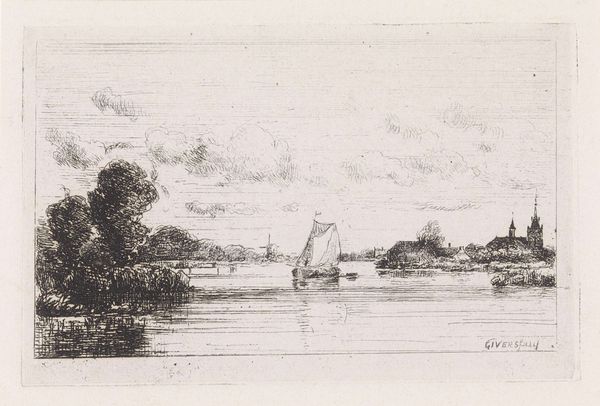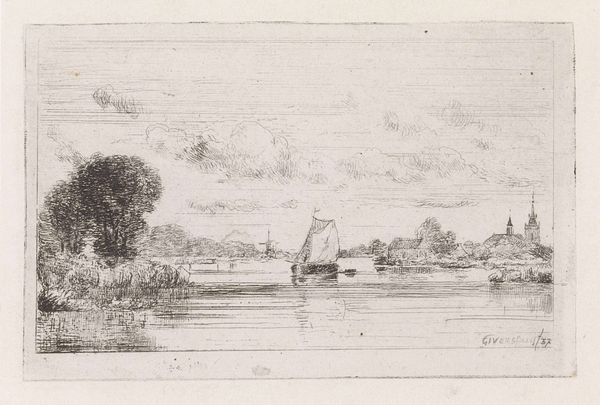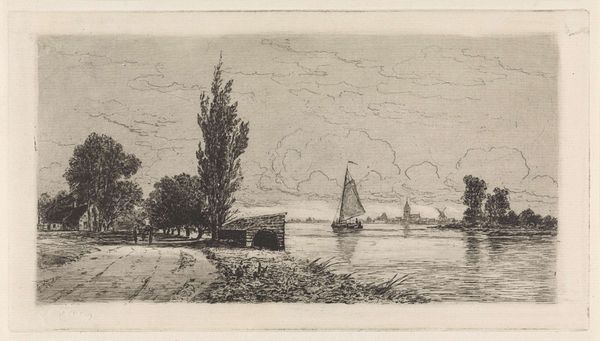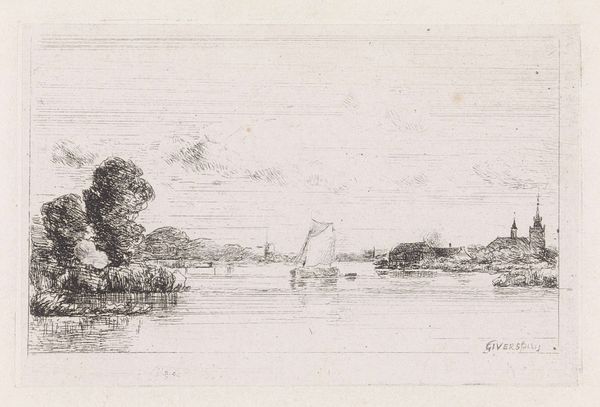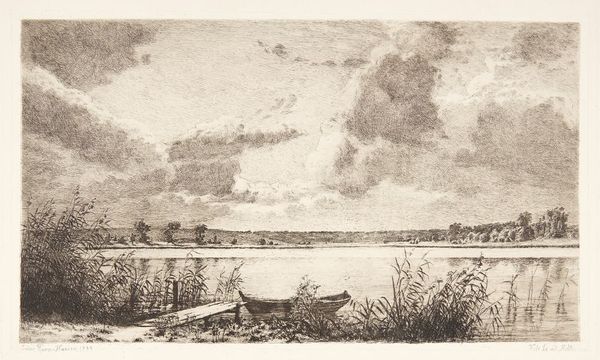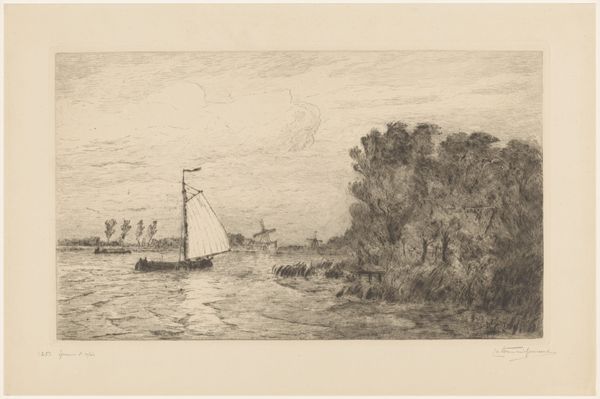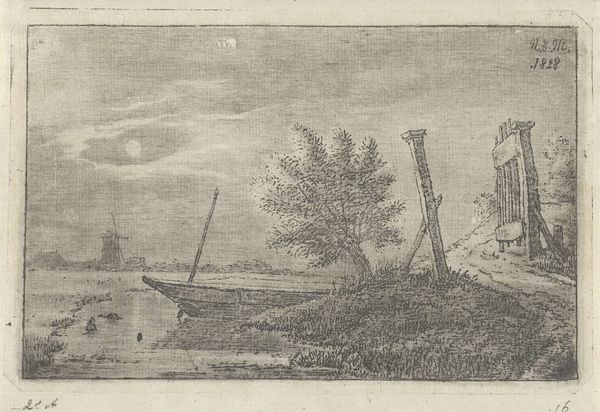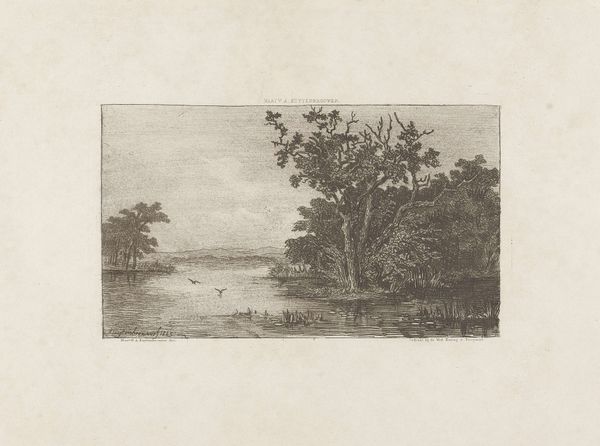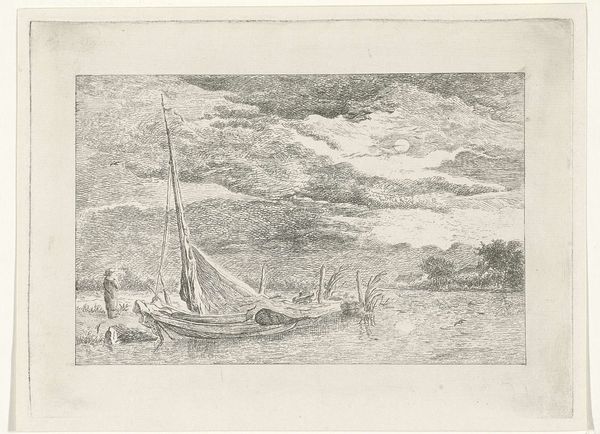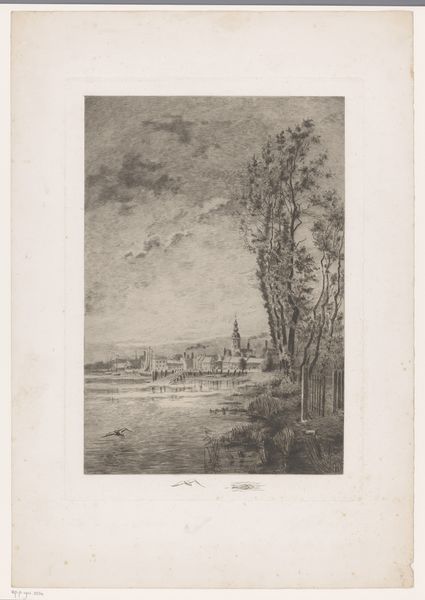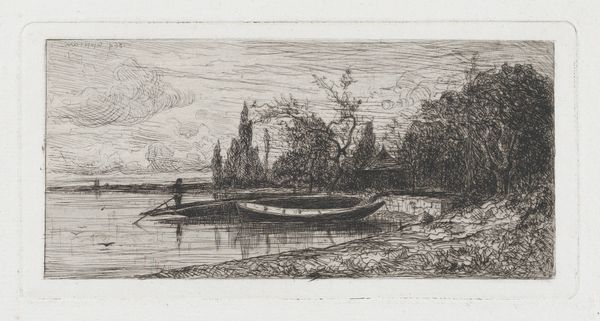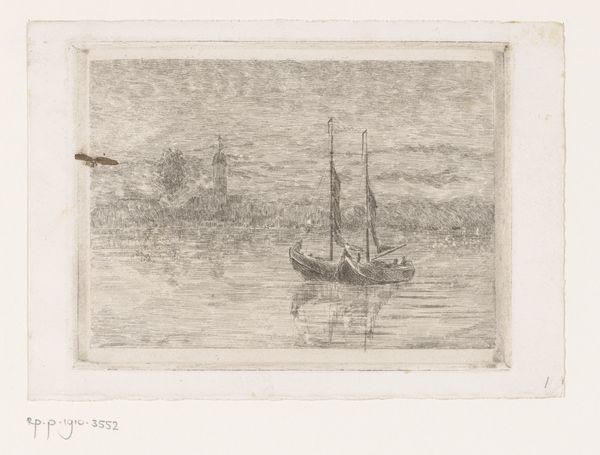
print, etching
# print
#
etching
#
landscape
#
river
Dimensions: height 76 mm, width 118 mm
Copyright: Rijks Museum: Open Domain
Editor: So, here we have "River View with a Sailing Ship" by Gijsbertus Johannes Verspuy, an etching from sometime between 1833 and 1862, residing at the Rijksmuseum. I’m struck by how contained the whole scene feels within that oval frame, almost like looking through a spyglass at a quickly vanishing past. What can you tell me about this piece? Curator: The oval format indeed adds a layer of artifice, almost theatrical. These landscape prints served a crucial role in shaping national identity during the 19th century. Can you imagine how this imagery, replicated and distributed as prints, helped create a shared vision of "Dutchness" at a time of major socio-political change? Consider its location. How does placement in the Rijksmuseum shape its narrative today? Editor: That's a great point about shaping national identity! So, its presence in the Rijksmuseum, essentially the national museum, reinforces its historical importance and connects it to a broader narrative of Dutch culture. How did the print medium contribute specifically? Curator: The print’s accessibility was key. Unlike paintings reserved for the wealthy elite, prints were affordable and could be widely circulated, reaching broader audiences and thus fostering a sense of shared cultural heritage. The landscape becomes a visual symbol available to almost everyone. Consider also that the rise of print media coincided with the growth of Dutch nationalism. Are there symbols of this national identity that are explicit? What part does the implied beholder play? Editor: I notice the windmill; it’s definitely a strong symbol, as is the ship, of course, evoking trade and exploration. And I guess the oval emphasizes the picturesque quality of it, inviting a specific kind of viewing. So it's not just showing a scene, but prompting a certain feeling and relationship to that scene for a wide audience. Curator: Exactly. We must remember these weren't neutral depictions. The artist and institutions actively crafted and promoted an image of the nation, one landscape at a time. We understand it from this new historical vantage point, no? Editor: Definitely. Seeing it in light of cultural identity shifts my perspective entirely! Thanks.
Comments
No comments
Be the first to comment and join the conversation on the ultimate creative platform.
